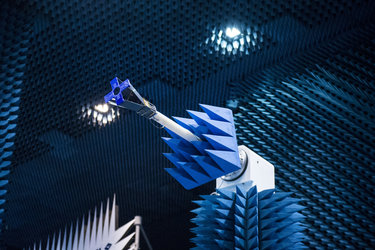Understanding the Tumbling Motion of Space Debris
When approaching a target for either an active debris removal or in-orbit serving mission it is critical to understand the attitude state and evolution of the target. Only by knowing the physical parameters of the target, is it possible to model the target’s attitude and tumbling state, and to guarantee safe close proximity operations for capture and docking manoeuvres. Reliable attitude information is also essential for contingency situations (i.e., loss of contact).
A GSTP funded activity, led by the Astronomical Institute of the University of Bern, developed new methods for observing, determining, and modelling the attitude motion of space debris targets.

The attitude dynamics of space debris is dependent on the physical characteristics of the object as well as its orbit and initial attitude state. Different orbits are subject to different environment forces – gravity gradients, eddy currents, atmospheric torques, outgassing and solar radiation pressure – which influences the target’s attitude motion. Collision with small-size objects, or the motion of internal components can also lead to the damping or acceleration of the target’s spin period and to changes of the spin axis orientation.

Existing methods and models developed in previous studies were improved to better predict and determine the attitude state of space objects. The newly developed attitude determination algorithms were tested with data collected from different ground-based observations and sensors, fusing information from passive optical instruments, laser ranging and radar imaging to achieve an improved attitude estimation or to confirm solutions. The attitude dynamics propagation tool known as iOTA (In-Orbit Tumbling Analysis simulator) reached a major state of maturity, accounting for more realistic spacecraft configuration and complex physical effects (i.e., modelling the Earth’s magnetic field and radiation pressure). iOTA analyses are now being used for the designing of active debris removal missions, providing the long-term assessment of different attitude states. The long-term attitude evolution of different representative cases was assessed analytically, compared, and then successfully validated against the observed trends determined from observations – providing an independent European observation capability to determine attitude states.
Contract 4000129383 closed in 2022. The results were presented at the Technology Sharing Day. The activity’s outcome is used and further improved within the Expert Centre Activities of the Space Safety Programme, to improve attitude determination methods and build-up an attitude database. The activity was performed by a consortium led by the Astronomical Institute of the University of Bern (Switzerland), together with partners from the Space Research Institute IWF Graz (Austria) and Hyperschall Technologie Göttingen GmbH (Germany).















 Germany
Germany
 Austria
Austria
 Belgium
Belgium
 Denmark
Denmark
 Spain
Spain
 Estonia
Estonia
 Finland
Finland
 France
France
 Greece
Greece
 Hungary
Hungary
 Ireland
Ireland
 Italy
Italy
 Luxembourg
Luxembourg
 Norway
Norway
 The Netherlands
The Netherlands
 Poland
Poland
 Portugal
Portugal
 Czechia
Czechia
 Romania
Romania
 United Kingdom
United Kingdom
 Slovenia
Slovenia
 Sweden
Sweden
 Switzerland
Switzerland





























